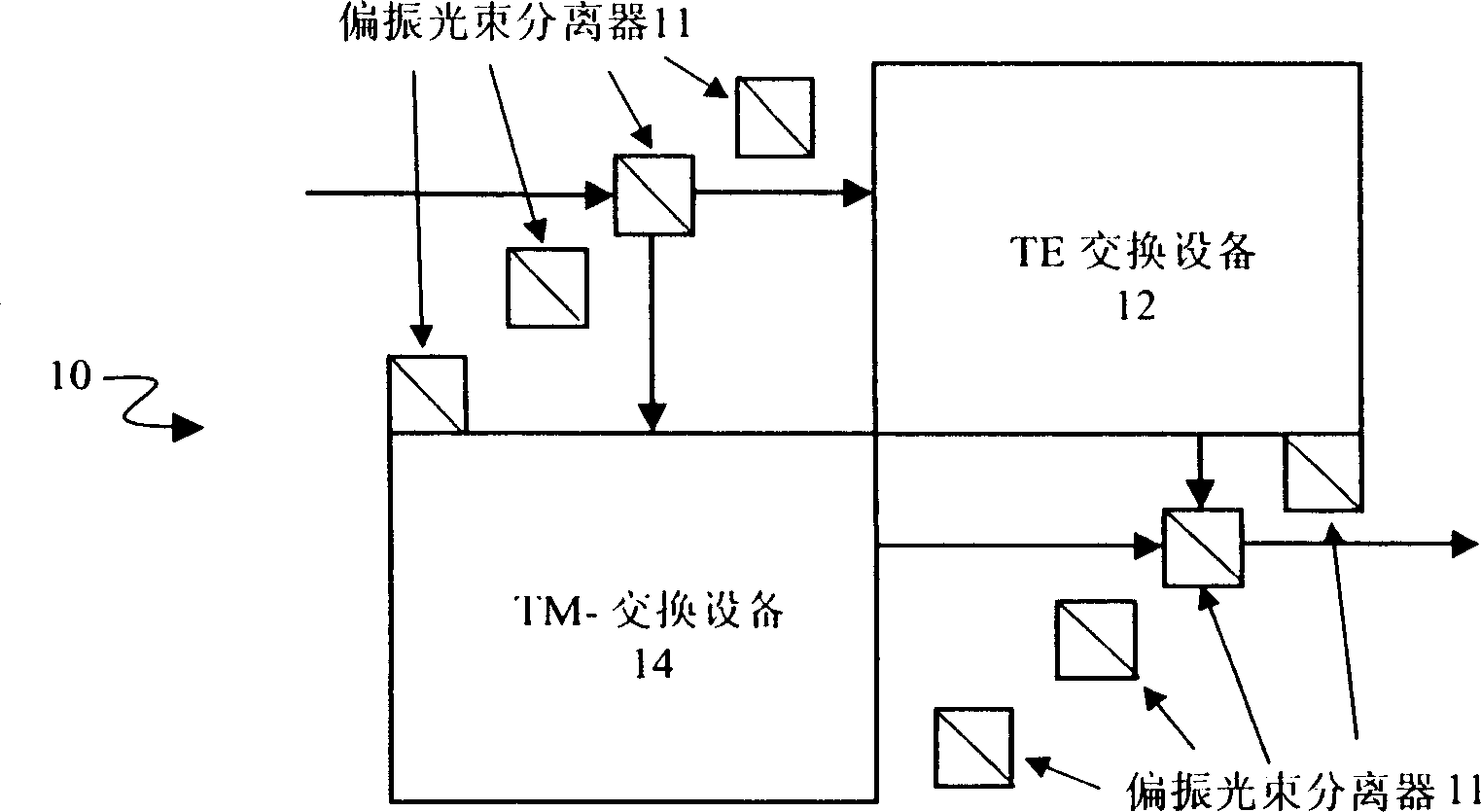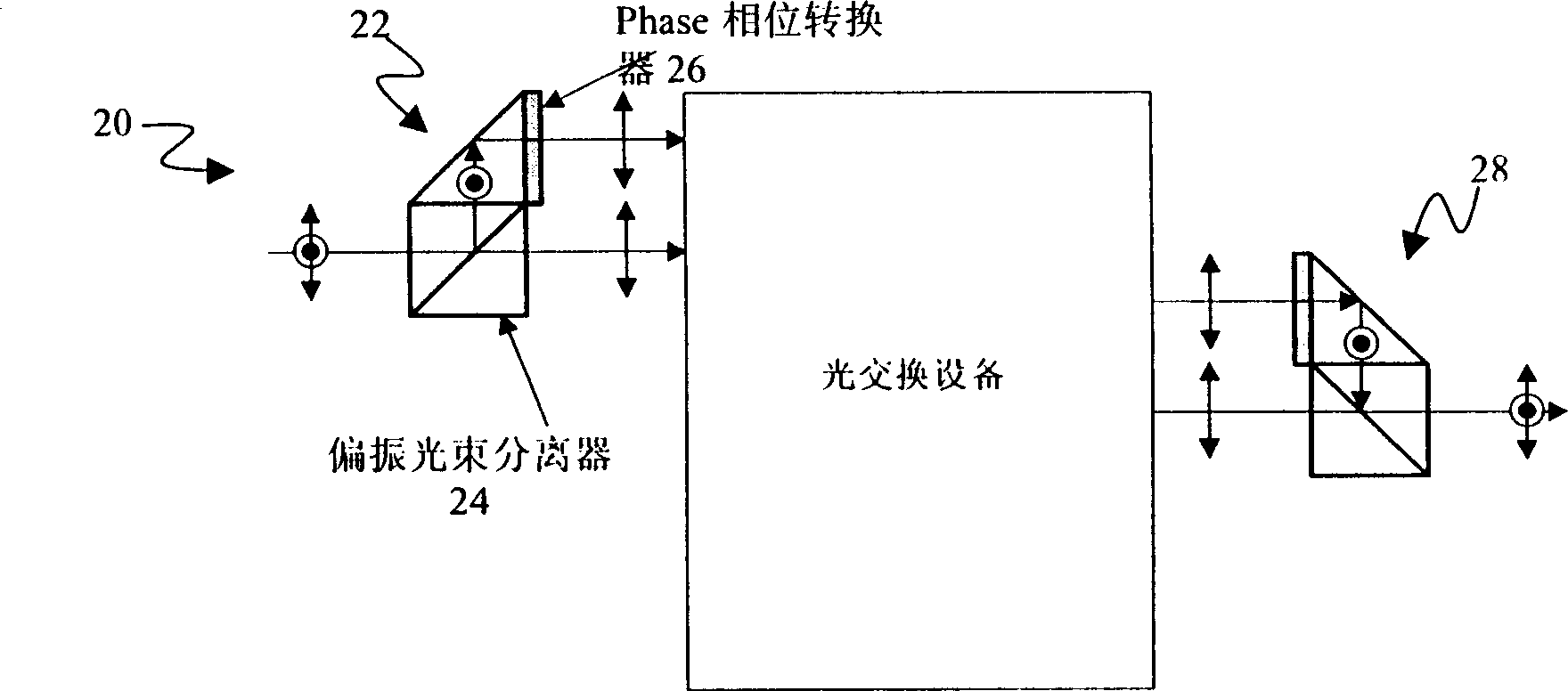Plarization idependent non-blocking all-optical switching device
A polarization-independent, polarized beam technology, applied in nonlinear optics, optics, polarizing elements, etc., can solve the problems of maintaining the polarization state, not being able to maintain the polarization state of light, and cumulative loss
- Summary
- Abstract
- Description
- Claims
- Application Information
AI Technical Summary
Problems solved by technology
Method used
Image
Examples
Embodiment Construction
[0023] Figure 3-4 B shows a device designed according to the idea of the present invention. The invention may be described by way of example of a 2x2 all-optical, polarization independent switch 50 in its simplest form. The unpolarized incident light from the input fibers A and B is split into two polarized beams with orthogonal polarization directions at the first element. Unlike a typical polarization switch, the two beams are routed separately through different paths of the same switching device, preferably with the same optical path length in the same switch. These beams are then combined at an element near the output fibers 0,1. As shown, this embodiment includes a plurality of polarizing beam splitters 54, a plurality of phase shifters 56, and a plurality of mirrors 52 configured so that two discrete inputs A and B can be coupled to two discrete Any combination of 0 and 1 output. These elements can also be scaled up to facilitate switching with a large number of i...
PUM
 Login to View More
Login to View More Abstract
Description
Claims
Application Information
 Login to View More
Login to View More - R&D
- Intellectual Property
- Life Sciences
- Materials
- Tech Scout
- Unparalleled Data Quality
- Higher Quality Content
- 60% Fewer Hallucinations
Browse by: Latest US Patents, China's latest patents, Technical Efficacy Thesaurus, Application Domain, Technology Topic, Popular Technical Reports.
© 2025 PatSnap. All rights reserved.Legal|Privacy policy|Modern Slavery Act Transparency Statement|Sitemap|About US| Contact US: help@patsnap.com



